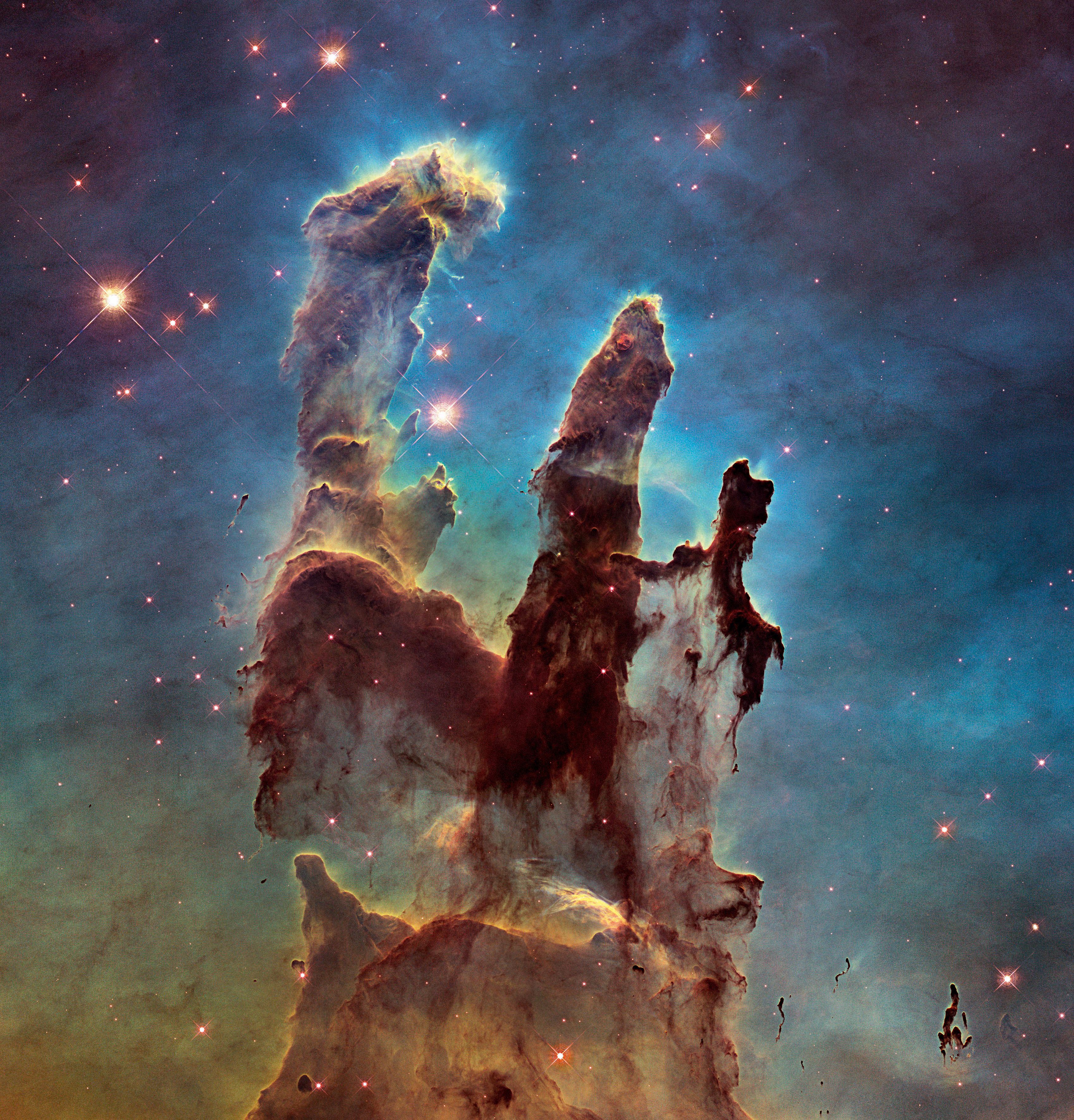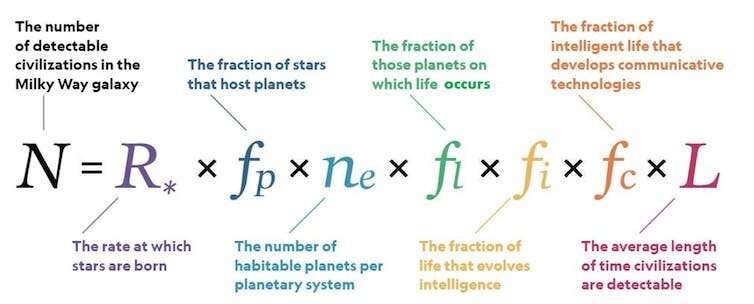Are we alone in this universe
For long times, man has wondered whether we are alone in the universe in his search for life beyond Earth. At first the answer seemed silly, as the earth was the centre of the universe and the sun was a glowing rock, about a third of the distance to the moon, according to the philosopher Anaxagoras, who lived in the 5th century BC
The first person to reasonably estimate the distance to the Sun was the ancient Greek philosopher and mathematician Aristarchus of Samos, who lived in the 3rd century BC. Aristarchus used observations of lunar eclipses and the angles between the Earth, Moon, and Sun to estimate the relative distances between these objects. He concluded that the Sun was much larger than the Earth and that it was approximately 20 times farther away than the Moon. Although his estimate of the distance to the Sun was inaccurate, his work laid the foundation for later astronomers to refine their measurements and develop more accurate methods for determining the distances to celestial objects.
Early insights in the universe
The first good estimate of the distance to the Sun was made by the ancient Greek astronomer Hipparchus in the 2nd century BC. Hipparchus used a method known as parallax, which involves measuring the apparent shift in the position of a nearby object against a more distant background as the observer’s position changes.

Hipparchus used observations of the positions of the Sun and Moon during a solar eclipse to estimate the distance to the Moon and then used this information to calculate the distance to the Sun. His estimate was based on the assumption that the Moon’s orbit around the Earth was circular, and he concluded that the distance from the Earth to the Sun was approximately 490 times the radius of the Earth. This equals about 93 million miles or 150 million Kilometers, which is very close to the modern-day value.
It’s worth noting that Hipparchus’ method and his estimate were not perfect, and subsequent astronomers made further refinements to calculate the distance to the Sun. However, Hipparchus is credited with creating the first reasonable estimate of this essential astronomical quantity.
Interestingly, the pre-Socratic philosopher Anaximander, who lived in the 6th century BC, proposed that the universe was infinite and that all things came from an undifferentiated, boundless substance.
On the other hand, the philosopher Pythagoras, who lived in the 5th century BC, believed that the universe was finite and that it was a sphere with the Sun, Moon, planets, and stars all orbiting around it.
However, the most influential ancient Greek view of the universe was that the philosopher Aristotle proposed in the 4th century BC. Aristotle believed that the universe was finite and that it was composed of a series of concentric spheres, with the Earth at the centre and the celestial bodies orbiting around it in a set order. This view of the universe was known as the geocentric model, and it held sway in Western thought for many centuries until it was superseded by the heliocentric model proposed by Copernicus in the 16th century.
Overall, it’s fair to say that the ancient Greeks had a wide range of beliefs about the size and nature of the universe, and their ideas were often based on philosophical rather than scientific considerations.

Before Copernicus, the prevailing view was that the Earth was at the centre of the universe and that the Sun, Moon, planets, and stars all orbited around it. Copernicus, however, proposed that the Sun was at the centre of the solar system, with the planets (including Earth) orbiting around it. This model allowed for a more accurate understanding of the positions and motions of the planets, and it paved the way for later astronomers to make more precise measurements of the distances to celestial objects.
One of the most significant implications of Copernicus’ heliocentric model was that it suggested that the universe was much larger than previously thought. If the Sun was at the centre of the solar system and the planets were orbiting around it, then the stars that appeared to be fixed in the sky must be much farther away than anyone had imagined. This realization helped to lay the groundwork for later astronomers to develop more accurate methods for measuring the distances to stars and other celestial objects.
The American astronomer Edwin Hubble was the first person to estimate the universe’s size in the early 20th century. Hubble made a series of groundbreaking observations showing that the universe was much larger than anyone had thought.



In the 1920s, Hubble discovered that many of the faint, fuzzy objects astronomers had previously thought were clouds of gas and dust within our Milky Way galaxy were actually other galaxies located far beyond our own. He also discovered that these galaxies were receding from us at high speeds and that the farther away a galaxy was, the faster it moved away from us. This observation is now known as Hubble’s law.
By measuring the distances to these galaxies and the speeds at which they were moving away from us, Hubble could estimate the universe’s size. He found that the universe was expanding, and he calculated that the universe’s age was about 2 billion years. Today, we know that the universe is much older, estimated at around 13.8 billion years, and much more extensive than Hubble initially estimated.
Hubble’s work revolutionized our understanding of the universe and laid the foundation for modern cosmology.
Search for life beyond Earth.
The search for life beyond Earth.is not new. The first stories can be traced back to ancient civilizations such as the Sumerians and the ancient Egyptians, who wrote about encounters with beings from other worlds. These stories often took the form of myths and legends, and it is difficult to determine whether they were intended to be taken literally or not.
One of the earliest known works of science fiction featuring extraterrestrial beings is the Greek writer Lucian’s “True History,” written in the 2nd century AD. The story is a satire that describes a journey to the Moon and encounters with various alien creatures.

In the Middle Ages, there were several stories and legends about encounters with extraterrestrial beings, such as the tale of the Green Children of Woolpit, which was first recorded in the 12th century. The story describes two children who appeared in the English village of Woolpit with green skin and who claimed to come from a place where the sun never shone.
However, it was not until the 19th and 20th centuries that stories about extraterrestrial beings became a popular topic in literature and media. This was mainly due to advances in science and technology, which allowed people to speculate more seriously about the possibility of life on other planets.
The Drake equation
With this many references to alien life, the question of how likely that would be quickly arises. The idea of extraterrestrial life has captivated people’s imaginations for centuries, but it wasn’t until the mid-20th century that scientists began to explore the possibility of life beyond Earth seriously. One of the most important tools that they have used to study this question is the Drake Equation, a mathematical formula that attempts to estimate the number of advanced civilizations that may exist in our galaxy.
The Drake Equation was first formulated in 1961 by an American astronomer and astrophysicist, Frank Drake. The equation is a probabilistic argument that is designed to estimate the number of technologically advanced civilizations that may exist in the Milky Way galaxy. The equation considers several different variables, each representing a factor that may influence the likelihood of intelligent life existing elsewhere in the universe.

Click the image to go to an interactive version of the equation (external link!)
The Drake Equation consists of seven variables:
- N = the number of civilizations in the Milky Way galaxy that are capable of communicating with us
- R* = the rate of star formation in the Milky Way galaxy
- fp = the fraction of stars that have planets
- ne = the number of planets per star that are in the habitable zone
- fl = the fraction of habitable planets where life actually arises
- fi = the fraction of life-bearing planets where intelligent life evolves
- fc = the fraction of civilizations that develop the technology to communicate with other civilizations
Each variable represents a different factor that may affect the likelihood of advanced civilizations existing in our galaxy. For example, R* represents the rate at which new stars are formed in our galaxy, while ne represents the number of planets that are located in the “habitable zone” around a star, where conditions may be suitable for life to arise.
Our current best estimates for some of these variables are based on recent astronomical observations and studies. For example, astronomers estimate that the Milky Way’s star formation rate is around 1-3 stars yearly. Studies of exoplanets (planets outside our solar system) have shown that around 20-50% of stars have planets in their habitable zone. However, the other variables in the equation, such as the fraction of habitable planets where life actually arises or the fraction of life-bearing planets where intelligent life evolves, are much more difficult to estimate accurately.
Using our best estimates for the variables, the current estimate for the number of Milky Way civilisations capable of communicating with us (N) is around 10. However, this estimate is highly uncertain, and the actual number could be much higher or much lower.
So, what does this mean for the possibility of extraterrestrial life? The answer is that we simply don’t know. The Drake Equation is an important tool for thinking about whether life exists elsewhere in the universe, but it is not a definitive answer. There are still many unknowns in the equation, and even small changes in the values of the variables can lead to vastly different estimates for the number of civilizations in our galaxy.
Despite the uncertainties, the Drake Equation has inspired generations of scientists and science fiction writers to think about the possibility of extraterrestrial life. It has spurred the development of new technologies, such as the Search for Extraterrestrial Intelligence (SETI), which uses radio telescopes to search for signals from other civilizations. It has also led to a greater appreciation of our place in the universe and a recognition that we are part of a vast and complex system that we still struggle to understand.
Then where is everybody
Despite the popularity and importance of the Drake Equation in the search for extraterrestrial life, it has also led to a significant problem known as the Fermi Paradox. The paradox, named after physicist Enrico Fermi, asks the question: if there are so many potential civilizations in the universe, why have we not yet detected any signs of them?

The Fermi Paradox arises from the discrepancy between the number of potentially habitable planets we believe exist and the apparent lack of evidence of intelligent life beyond Earth. Some scientists have argued that the paradox is evidence that intelligent civilizations are extremely rare or that they are doomed to self-destruction before they can communicate with other civilizations.
Possible Solutions to the Fermi Paradox
Many possible solutions have been proposed over the years. Here are some of the most common:
- Rare civilizations: One possibility is that intelligent civilizations are simply very rare and that the chances of two civilizations existing nearby and simultaneously are very low. This could be due to many factors, including the likelihood of life arising in the first place, the difficulty of evolving intelligence, or the tendency of civilizations to self-destruct.
- Communication difficulties: Another possibility is that interstellar communication is simply too difficult or too costly for advanced civilizations. The distances between stars are vast, and even with the most advanced technology, it may take centuries or even millennia to send a message from one star system to another. Additionally, there may be cultural or technological barriers to communication that we simply cannot understand.
- Self-destruction: It is possible that many intelligent civilizations may self-destruct before they have the chance to communicate with other civilizations. This could be due to war, environmental collapse, or other factors that cause the civilization to collapse.
- Hiding or avoiding detection: It is possible that intelligent civilizations are intentionally avoiding contact with us. Some have speculated that intelligent civilizations may have created a “galactic club” or a set of protocols prohibiting communication with less advanced civilizations like ours. Alternatively, they may intentionally hide their existence to avoid being detected by hostile civilizations.
- We are alone: Another possibility is that we are the only intelligent civilization in the universe. While this idea may seem unlikely given the vastness of the universe, it cannot be ruled out entirely.
- Lack of advanced technology: It is possible that we simply do not yet have the technology to detect other civilizations. It may be that other civilizations are communicating in ways we do not yet understand or using technology we have not yet discovered.
- ETs are already here: Finally, some have suggested that intelligent civilizations may have already visited Earth or that they are currently here but are not revealing themselves for some reason. While this idea remains highly controversial, it cannot be entirely ruled out.
- And finally, the aliens are here, but the government is hiding it. If one considers this would need a global conspiracy between hostile countries, of whom most have a horrible track record in hiding or collaboration, it becomes quickly clear why this idea is nonsense.
The Aliens are already here.
The idea that aliens are or were here on Earth is a controversial one, and various arguments have been put forward to support this idea. Here are some of the most common views:

- Historical and cultural evidence: Some people point to various historical and cultural artefacts as evidence of alien visitation. For example, some argue that the ancient Egyptian pyramids could not have been built without advanced alien technology or that cave paintings and carvings depict beings that resemble modern-day aliens.
- UFO sightings: UFO (Unidentified Flying Object) sightings have been reported by people all over the world for decades. While the vast majority of these sightings can be attributed to natural phenomena or man-made objects, some people believe that some of these sightings are evidence of alien spacecraft.
- Alien abductions: Some people claim to have been abducted by aliens and subjected to various medical experiments and procedures. While these claims are highly controversial and often dismissed as hoaxes or hallucinations, some argue they are evidence of alien visitation.
- Government cover-ups: Some people believe that governments worldwide are aware of the existence of aliens but are covering it up to prevent panic or maintain control over the population. This idea is often supported by conspiracy theories that point to alleged government documents or secret programs that are said to be related to aliens.
- Scientific evidence: While no conclusive scientific evidence supports the idea that aliens have visited Earth, some scientists argue that the presence of extraterrestrial life could explain certain phenomena. For example, some have suggested that mysterious radio signals known as “fast radio bursts” could be evidence of alien technology.
It is important to note that many of these arguments are controversial and are not widely accepted by the scientific community. While the idea of aliens visiting or living on Earth is certainly fascinating, it is important to approach these claims with a healthy dose of scepticism and to rely on scientific evidence rather than anecdotal or cultural evidence. Nonetheless, continued research and exploration may help us determine whether aliens have visited our planet.
Human advances are driven by or supported by found alien technology

The idea that alien technology is responsible for the rapid pace of technological progress that we have witnessed in the past few decades is a popular conspiracy theory. This idea suggests that certain governments and organizations have access to alien technology, which they have used to accelerate their own technological progress.
However, there is no scientific evidence to support this idea. While there have been countless reports of UFO sightings and alleged encounters with extraterrestrial beings, there is no credible evidence to confirm their existence or suggest that they provide humanity with advanced technology.
Furthermore, even if we were to assume that alien technology is real and that it is driving human progress, it is unlikely that we would be able to understand or replicate it entirely. Alien technology would be based on completely different scientific principles and physical laws than what we are familiar with on Earth, making it extremely difficult, if not impossible, to reverse engineer.
Instead of relying on speculative theories about the origin of human technological progress, it is important to focus on the scientific and technological advancements that are happening on Earth. There are countless examples of breakthroughs in fields ranging from medicine to energy to transportation, and these advances are the result of years of dedicated scientific research and technological innovation.
The rapid pace of technological progress that we have witnessed in the past few decades can be attributed to a combination of factors, including scientific research, collaboration, and increased funding for research and development. The sharing of knowledge and research findings between scientists and engineers from different countries has also contributed to accelerating technological progress.
It is important to note that while the idea of alien technology being used to advance human technology is a highly speculative and unproven theory, there are still possible other civilizations out there in the universe that are more advanced than we are. The possibility of the existence of extraterrestrial life remains an intriguing and exciting area of scientific research, but it is important to rely on credible scientific evidence rather than speculative theories when evaluating claims about the origin of human technological progress.
What do you think? Let us know in the comments.